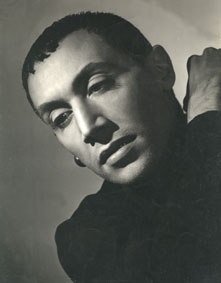 Jack Cole, one of the greatest yet least known jazz choreographers is thought of by some as the father of theatrical jazz dance, responsible for the jazz we know today. He was the influencer behind huge choreographic names such as Bob Fosse, with his work reaching the likes of modern dance greats Alvin Ailey and Jerome Robbins. Cole worked to create the style of jazz that is still widely received today, on Broadway, in Hollywood movie musicals and in music videos.
Jack Cole, one of the greatest yet least known jazz choreographers is thought of by some as the father of theatrical jazz dance, responsible for the jazz we know today. He was the influencer behind huge choreographic names such as Bob Fosse, with his work reaching the likes of modern dance greats Alvin Ailey and Jerome Robbins. Cole worked to create the style of jazz that is still widely received today, on Broadway, in Hollywood movie musicals and in music videos.
Cole was born in 1911 (he lived until 1974) and studied, as many did modern dance pioneers, with the Denishawn Dance Company under Ruth St Denis and Ted Shawn in the early twentieth century. Cole went on to make his professional debut in 1930, but abandoned modern dance for a more commercial style of dancing on Broadway and in movies. Jazz, at this point, was hugely popular, but did not employ any use of technique.
As a result, Cole began to create his own style of modern dance. He continued to work with modern dancers Doris Humphrey and Charles Weidman to form a signature style. This style was aided by Cole’s study of the Indian dance technique Bharatanatyam, forming the basis of his unique jazz technique and choreography through the precise isolations of the head, arms and fingers, in addition to the swift changes of direction. Cole consequently named his jazz style ‘urban folk dance’, having observed the Lindy Hoppers and their integral rhythms, incorporating this with Indian styles and creating the foundation of the theatrical jazz style.
Cole’s choreography saw him involved in various Broadway shows, such as Alive and Kicking (1950), A Funny Thing Happened on the Way to the Forum (1962) and Man of La Macha (1965), for which he was nominated for a Tony award. However, today Cole is remembered for his work with films of some 25 credited and non-credited works. In addition to working as a choreographer and performer, Cole also established dance training at Columbia Pictures, in which his programme included Humphrey/Weidman technique, Cecchetti ballet, East Indian dance and flamenco, where he worked with dancers such as Carol Haney and Gwen Verdon, who went on to become Fosse’s muse.
Matt Mattox, the iconic jazz dancer and teacher most associated with the Cole style broke the Cole lineage in America when he moved to London in 1970. It has only been recently that there has been a renewed interest in Cole’s work.
